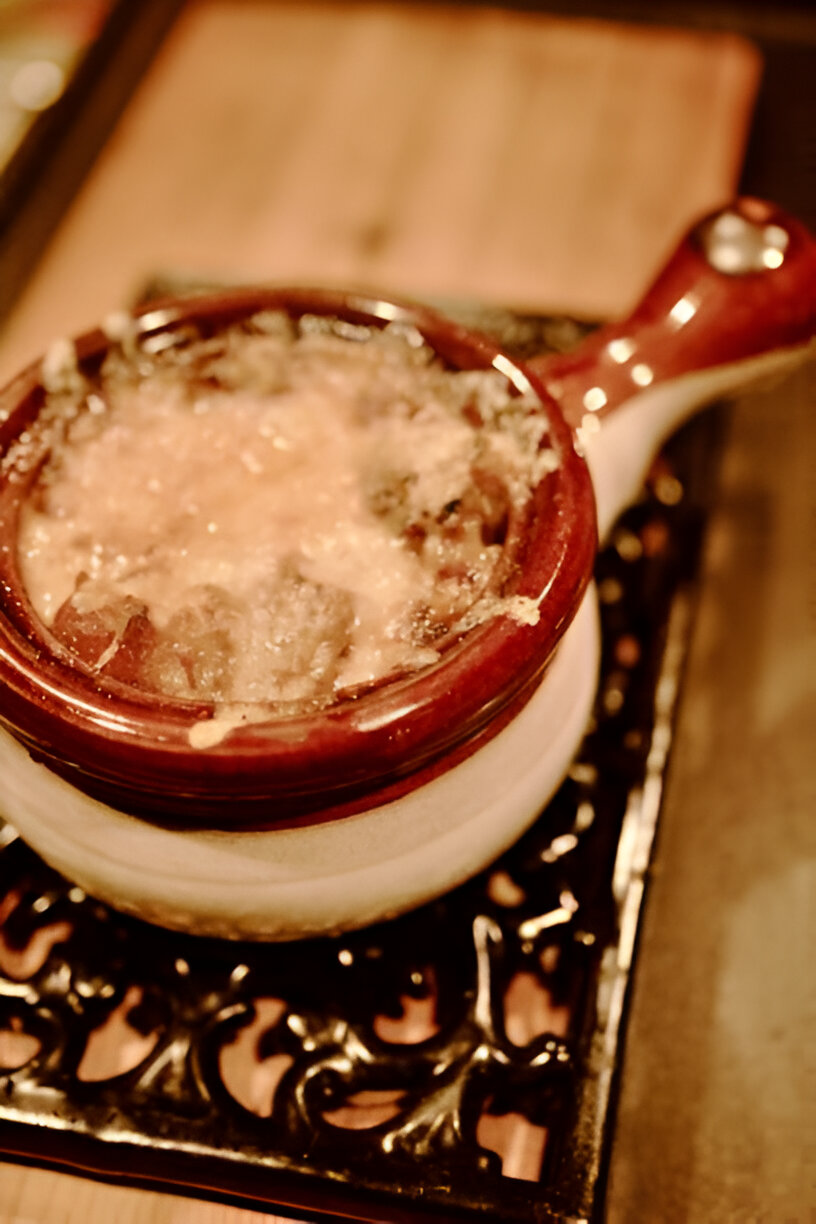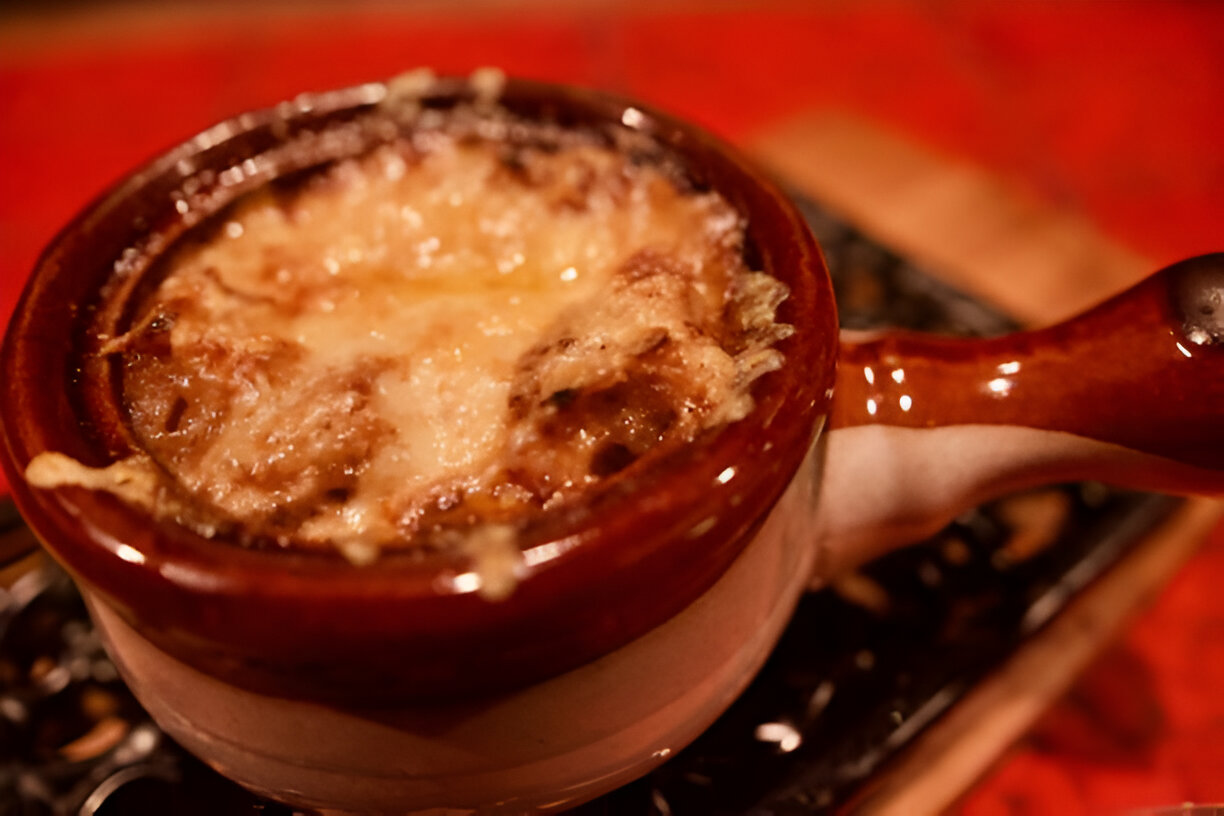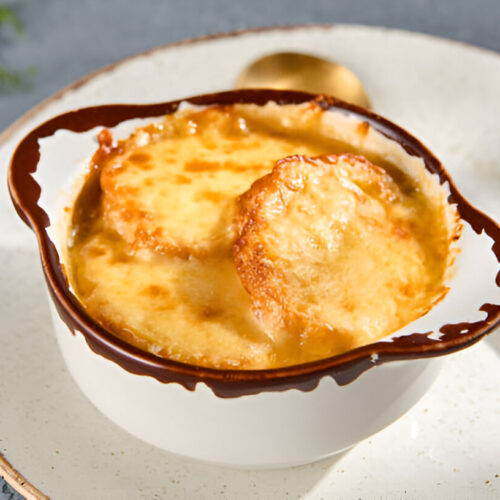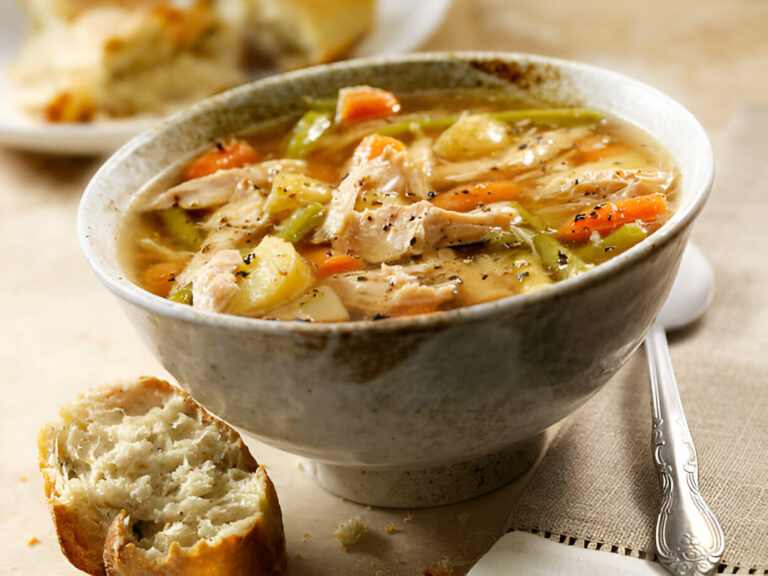Classic French Onion Soup: A Timeless Recipe and History
Classic French onion soup is a comforting and flavorful dish that has warmed hearts and bellies for centuries. Renowned for its rich taste and aromatic qualities, this beloved soup centers around the humble onion, transforming it into a culinary masterpiece that showcases the essence of French cuisine. Onions, which are staple ingredients in numerous French dishes, convey a depth of flavor, particularly when caramelized, creating the foundation of this classic soup.
The origins of French onion soup can be traced back to ancient Roman and Greek cultures, where various forms of onion soup were enjoyed by the masses. Over time, it evolved from a simple rustic dish, often consumed by the working class, to a refined staple featured on restaurant menus across the globe. Today, French onion soup is synonymous with French dining, appreciated not only for its taste but also for its cultural significance as a symbol of comfort and community.
In this article, readers can expect to dive deep into the fascinating history of French onion soup, discovering its origins and variations across different regions of France. Moreover, we will explore the key ingredients that contribute to its distinctive flavor profile, examine the health benefits of onions, and provide an easy-to-follow recipe that brings this timeless classic to life. Additionally, a FAQ section will address common queries about French onion soup, ensuring that both novice cooks and seasoned chefs can enjoy making and savoring this exquisite culinary delight.

The History of French Onion Soup
Classic French onion soup boasts a rich and intriguing history that dates back to ancient times. The earliest references to onion soup can be traced to ancient Roman and Greek cultures, where various iterations of this dish provided nourishment for the masses. Romans were particularly fond of onions, and they often consumed them in a simple broth, highlighting the humble beginnings of what would eventually evolve into today’s sophisticated soup.
As centuries progressed, French onion soup developed alongside the changing landscape of French cuisine. Initially viewed as a rustic dish favored by the working class, it became a culinary staple in French households. The transformation was gradual, reflecting the evolving tastes and trends of society. By the 18th century, the dish started to gain popularity among the upper classes, transitioning from a simple peasant fare to a beloved item gracing the menus of fine dining establishments.
Throughout France, the preparation and ingredients of French onion soup vary, reflecting regional influences. For instance, some areas embrace the use of white wine, while others might opt for a splash of brandy or cognac, further enhancing the soup’s complex flavors. These regional variations not only highlight the versatility of the dish but also connect French onion soup to the distinct culinary traditions found throughout the country.
Ingredients Overview
At the heart of classic French onion soup lies a select group of key ingredients that each contribute to its signature taste and texture. The essential components include:
- Yellow onions: The star of the show, these onions caramelize beautifully, lending a sweet depth to the soup.
- Beef broth/vegetable broth: A flavorful base that enriches the soup, with beef broth offering a more robust flavor.
- Butter: Adds richness and helps in caramelizing the onions to perfection.
- Olive oil: A favored alternative or supplement to butter for cooking the onions.
- Dry white wine: Introduces acidity and enhances the overall flavor profile.
- Gruyère cheese: A must-have for the traditional cheesy topping that adds a delightful gooeyness.
- Baguette: Slices of this crusty bread serve as a sturdy platform for the cheese topping.
- Fresh thyme and bay leaves: Essential herbs that bring aromatic notes to the dish.
The journey to a perfect French onion soup begins with choosing high-quality ingredients. The type of onion can significantly influence the flavor, with yellow onions being the most commonly recommended. Equally important is the broth; using homemade or high-quality store-bought broth will enhance the overall taste of your soup, making it a comforting culinary experience.

Health Benefits of Onions
Onions, the star ingredient of French onion soup, are not only flavorful but also packed with numerous health benefits. They are low in calories yet high in essential nutrients, making them a valuable addition to any diet. Rich in vitamins C and B6, as well as manganese and potassium, onions provide a boost to the immune system, aid in metabolism, and help regulate blood pressure.
One of the most significant advantages of onions is their antioxidant properties. They contain flavonoids, which are known to combat oxidative stress in the body. This contributes to overall health, potentially lowering the risk of chronic diseases such as heart disease and cancer. Additionally, onions have anti-inflammatory effects that can help mitigate conditions like arthritis and asthma.
In the realm of French cuisine, the inclusion of onions not only enhances the flavor of dishes but also elevates their nutritional profile. Incorporating onions into meals, like in the classic French onion soup, allows individuals to enjoy delicious flavors while reaping various health benefits. This combination of taste and health makes French onion soup a delightful and nourishing choice for any meal.
How to Make Classic French Onion Soup
Ingredients
To make a delicious classic French onion soup, gather the following ingredients:
- 4 large yellow onions, thinly sliced
- 4 tablespoons butter
- 2 tablespoons olive oil
- 1 teaspoon salt
- 1 teaspoon sugar (optional, to aid caramelization)
- ½ cup dry white wine
- 8 cups beef or vegetable broth
- 1 bay leaf
- 2-3 sprigs fresh thyme
- 12 slices of baguette, toasted
- 2 cups grated Gruyère cheese
Directions
1. Caramelizing the Onions: In a large heavy-bottomed pot or Dutch oven, melt the butter and olive oil over medium heat. Add the sliced onions and stir to coat them evenly. Sprinkle with salt and sugar. Cook the onions slowly, Stirring occasionally for about 30-40 minutes, until they are deeply caramelized and golden brown. This slow cooking process is crucial for developing the soup’s rich flavor.
2. Building the Soup: Once the onions are caramelized, add the dry white wine to deglaze the pot, scraping up any browned bits from the bottom. Allow the wine to simmer for a few minutes until reduced. Then, pour in the beef or vegetable broth, add the bay leaf and thyme, and bring the mixture to a gentle boil. Reduce the heat and let the soup simmer for 20-30 minutes, allowing the flavors to meld. Season with salt and pepper to taste.
3. Preparing the Bread and Cheese Mixture: While the soup is simmering, preheat your oven to 350°F (175°C). Slice the baguette and place the slices on a baking sheet. Toast in the oven for about 10 minutes or until golden and crisp. Alternatively, you can broil them for a couple of minutes for a quicker option. Once toasted, set aside.
4. Final Assembly and Broiling: Preheat the broiler. Ladle the hot soup into oven-safe bowls, leaving some room at the top. Place a slice or two of the toasted baguette on top of each bowl, followed by a generous amount of grated Gruyère cheese. Place the bowls on a baking sheet and broil for about 3-5 minutes, or until the cheese is bubbly and lightly browned. Serve immediately, garnished with additional thyme if desired.
Cooking Tips and Advice
While preparing French onion soup, there are a few common mistakes to avoid for the best results. First, ensure you caramelize the onions long enough; undercooked onions can lead to a soup that lacks depth of flavor. Second, don’t be shy with the cheese—generous portions are key to achieving that comforting, gooey topping.
For variations, you can experiment with different cheese options, such as a mix of Gruyère and Emmental for added complexity. If you’d like a vegetarian version, simply substitute vegetable broth for beef and consider adding more herbs for depth.
When it comes to serving, pair your French onion soup with a crisp green salad and a glass of dry white wine, which complements the soup’s flavors wonderfully. Enjoy this comforting classic at any gathering or as a cozy meal at home.
FAQs
What makes French onion soup different from other onion soups? French onion soup is distinguished by its caramelized onions, rich broth, and the melted cheese topping, which gives it a unique depth of flavor that sets it apart from simpler onion soups.
Can I make French onion soup in advance? Yes, you can prepare the soup in advance. Store it in an airtight container in the refrigerator for up to three days. Reheat before serving and broil the cheese topping just before eating for a fresh, delicious experience.
What is the best type of cheese for French onion soup? Gruyère cheese is traditionally used due to its melting quality and flavor. However, you can also blend it with Swiss cheese or even a sharp cheddar for a different taste profile.
Is French onion soup gluten-free? Traditional French onion soup uses baguette as a topping, which contains gluten. To make it gluten-free, opt for gluten-free bread options or skip the bread entirely and serve the soup as is.
How can I make a vegetarian version of French onion soup? Use vegetable broth instead of beef broth and ensure that the cheese used is rennet-free if adhering to vegetarian dietary restrictions. You can also enhance the umami flavor by adding mushrooms to the soup.
Conclusion
French onion soup is a time-honored dish that embodies the rich history and culinary heritage of France. Its combination of sweet, caramelized onions, rich broth, and gooey cheese creates an unforgettable dining experience that brings comfort and warmth to the table. Whether you are enjoying a bowl on a chilly day or serving it at a gathering, this classic recipe invites you to savor each spoonful.
Now that you’re equipped with knowledge and a delightful recipe, why not try making French onion soup at home? Share your baking and cooking experiences, and feel free to experiment with your own twists on this treasured classic.
Additional Resources
For more cooking inspiration, check out our related recipes such as Creamy Potato Leek Soup and Traditional Coq au Vin. Additionally, consider investing in high-quality kitchen tools like a robust Dutch oven and a good chef’s knife to enhance your cooking experience.

Classic French Onion Soup
Equipment
- 1 Large pot or Dutch oven
- 1 Wooden spoon
- 1 Ladle
- 1 Baking sheet
- 4 Oven-safe bowls or crocks
- 1 Cutting board
Ingredients
- 4 large onions About 2 lbs.
- 4 tablespoons unsalted butter
- 1 tablespoon olive oil
- 1 teaspoon salt
- 1 teaspoon sugar
- 8 cups beef broth Preferably low-sodium.
- 1/2 cup dry white wine Optional.
- 1 tablespoon fresh thyme Or 1 teaspoon dried thyme.
- 1 bay leaf bay leaf
- to taste freshly ground black pepper black pepper
- 8 slices French bread 1-inch thick.
- 2 cups grated Gruyère cheese Or a mix of Gruyère and Swiss.
Instructions
- Begin by slicing the onions thinly using a knife. Aim for even slices to ensure even cooking.
- In a large pot or Dutch oven, melt the butter and olive oil over medium heat. Add the sliced onions, salt, and sugar. Cook, stirring frequently, for about 25-30 minutes, until the onions are caramelized and golden brown.
- Add the thyme, bay leaf, and freshly ground black pepper to the caramelized onions. Stir well.
- Pour in the beef broth and white wine (if using). Bring the mixture to a simmer, then reduce the heat to low. Let it cook for an additional 15 minutes.
- While the soup simmers, preheat your oven to 375°F (190°C). Arrange the slices of French bread on a baking sheet. Toast them in the oven for about 10 minutes, until golden and crispy.
- Remove the bay leaf from the soup. Ladle the soup into oven-safe bowls or crocks. Place a slice of toasted French bread on top of each bowl, then generously sprinkle with grated Gruyère cheese.
- Place the bowls on the baking sheet and transfer them to the oven. Bake for about 10-15 minutes or until the cheese is bubbling and golden.
- Carefully remove the bowls from the oven and serve hot.







